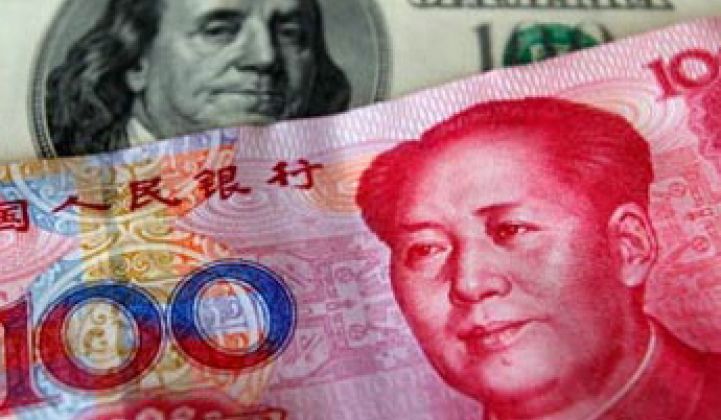The ongoing U.S. Department of Commerce investigation against China for its solar industry subsidies that (we believe) distort the solar PV competitive and trade landscape will likely offer a couple of data points to ponder in the coming days.
May 17, 2012: Preliminary determination of Anti-dumping Duty (AD) investigation.
Countervailing Duties (CVD)
Sometime in May: Follow up on issues that the Department of Commerce did not have adequate time to rule when it announced preliminary determination on Countervailing Duties (CVD) on March 20, 2012. Namely:
- The Provision of Land for less than adequate remuneration (LTAR) to Wuxi Suntech Power,
- Provision of Electricity for LTAR, and
- Enterprise Income Tax Law Research and Development (R&D) Program.
Additional CVD issues to be investigated: Beyond these, the U.S. Department of Commerce will likely add additional issues which were not taken up in the preliminary CVD ruling. These range from: LTAR for glass, LTAR for aluminum extrusions, over-rebate of value-added taxes (VAT), preferential access to capital markets (overseas domicile, overseas market listing), and debt forgiveness through corporate reorganization.
March 20 CVD ruling and outlook: For reference, we note the preliminary ruling had CVDs at 2.90% for Suntech Power, 4.73% for Trina Solar, and 3.61% for other Chinese solar vendors. With better clarity on issues left out in March, and ruling on additional issues likely added for investigation, we believe the final U.S. Department of Commerce ruling will have a higher level of CVDs than have come through so far. Would it be a large enough to be a deterrent? We will have to wait and see.
Final rulings on AD and CVD: For now, the U.S. Department of Commerce is set make final AD and CVD rulings on Chinese solar cells/modules on September 28, 2012, with the effectiveness of the final rulings largely residing in the political domain.
What does it mean for stocks: The preliminary CVD ruling on Chinese solar cells/modules on March 20 was very tepid and came as a surprise to many given ample evidence of wide-ranging subsidies in China. Despite strong rhetoric against Chinese trade practices by President Obama in his SOTU speech earlier this year, the preliminary CVD ruling was seen as a sort of political accommodation by the U.S., giving China some time to effect change before responding more robustly with more evidence. With the preliminary AD we note that any ruling of 10 percent to 15 percent would be a good starting point to send a message (and we can expect the Chinese solar stocks to react negatively). But if the ruling is in the low-single digits like the CVD, then it will be one more meaningless exercise.
More importantly, solar stock catalysts in the near term are tied to:
- Cost progress by companies over the next several quarters so they exit the year with signs of profitability
- Outcome from the arbitration panel (sent on May 11, 2012) regarding sharp cuts in the FIT in Germany (likely less onerous).
- Size/sustainability of newer demand from China, India, Japan, SE Asia, and emerging demand from other regions.
Our viewpoints largely converge with Gordon Brinser/CASM that the insidious and predatory nature of Chinese state support (via subsidies, mispricing/misallocation of capital) has damaged global solar PV manufacturing while propping up its large domestic base, which is littered with uncompetitive/unviable companies. Free of rules, China's state sponsored capitalism in solar PV manifests as a massive employment welfare scheme engaged in asymmetric/unrestricted warfare against overseas competition. Noting that China imports a rising percentage of primary energy, it would be better off driving demand (to at least 8 gigawatts to 9 gigawatts) to set right the supply-side imbalance that is of its own making.
***
Hari Chandra Polavarapu is the Managing Director of Solar/Cleantech Research at AURIGA USA LLC.



